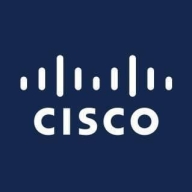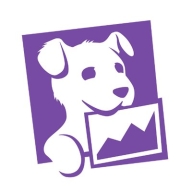

Datadog and Cisco Intersight are prominent players in the infrastructure and application monitoring category. Datadog seems to have an edge with its extensive integrations and comprehensive dashboard capabilities, while Intersight shines in data center management and integration with Cisco environments.
Features: Datadog is known for its seamless integration with AWS, Docker, and Splunk, making it suitable for root cause analysis, infrastructure monitoring, and providing powerful APM and trace-level data insights. It excels with numerous integrations and comprehensive dashboards. Cisco Intersight focuses on data center management, providing robust capabilities for environments with Cisco and other vendors, allowing integrations with tools like Pure Storage, HashiCorp, and Kubernetes. Its strong orchestration and manageability features are beneficial for mixed environments.
Room for Improvement: Datadog could improve its training resources and cost management features to avoid unexpected billing. It also needs better user-friendly log filtering, anomaly detection, and security monitoring integrations. Cisco Intersight requires enhancements in hybrid cloud management, third-party monitoring tool integrations, and improved automation capabilities to fully optimize its offerings.
Ease of Deployment and Customer Service: Datadog supports a smooth deployment across public, private, and hybrid cloud environments, praised for responsive customer service but faces occasional speed and availability concerns. Cisco Intersight, while offering stable performance with various deployment models, focuses more on-premises capabilities and requires improvements in setup ease. The support experience can be inconsistent with some unresolved issues noted.
Pricing and ROI: Datadog offers flexible pricing that can quickly become expensive with increased metrics and logs usage, providing significant ROI through system reliability. Pricing management remains crucial. Cisco Intersight offers competitive pricing for larger enterprises with a clear licensing structure, though initial costs can be higher compared to AWS and Azure. Both deliver operational improvements, with Datadog offering lower entry points for smaller teams with careful cost handling.
It simplifies the onboarding of new hardware, reducing time spent on manual installations and configurations.
Previously we had thirteen contractors doing the monitoring for us, which is now reduced to only five.
Datadog has delivered more than its value through reduced downtime, faster recovery, and infrastructure optimization.
I believe features that would provide a lot of time savings, just enabling you to really narrow down and filter the type of frustration or user interaction that you're looking for.
For complex issues, it's challenging to get the right engineer quickly unless you have a specific contract like CX.
Cisco provides better support than anyone else.
Cisco technical support is helpful.
When I have additional questions, the ticket is updated with actual recommendations or suggestions pointing me in the correct direction.
Overall, the entire Datadog comprehensive experience of support, onboarding, getting everything in there, and having a good line of feedback has been exceptional.
I've had a couple instances where I reached out to Datadog's support team, and they have been really super helpful and very kind, even reaching back out after resolving my issues to check if everything's going well.
I rate its scalability a ten out of ten due to its capability to manage multiple domains and automate service requests.
Cisco Intersight is scalable enough for our needs, allowing management in a multi-environment setup and working remotely while deploying servers.
Datadog's scalability has been great as it has been able to grow with our needs.
We did, as a trial, engage the AWS integration, and immediately it found all of our AWS resources and presented them to us.
Datadog's scalability is strong; we've continued to significantly grow our software, and there are processes in place to ensure that as new servers, realms, and environments are introduced, we're able to include them all in Datadog without noticing any performance issues.
Some steps are not included in the official documentation, which can create challenges.
It is always accessible online, secure, and allows access from any location, following strict authentication standards.
Datadog is very stable, as there hasn't been any downtime or issues since I've been here, and it's always on time.
Datadog seems stable in my experience without any downtime or reliability issues.
Datadog seems to be more stable, and I really want to have a complete demo before making a call to decide on this.
There is a significant issue regarding migration from UCS Manager into Intersight without formatting the Fabric Interconnects (FI), which is problematic in a production environment.
It would be great to have a chat session mode AI so that when I am on standby and encountering issues, I could engage with it, much like ChatGPT.
When registering our devices and servers using tokens, auto-detection could make it easier by automatically identifying resources and adding them to the platform.
It would be great to see stronger AI-driven anomaly detection and predictive analytics to help identify potential issues before they impact performance.
We want to be able to customize the cost part, and we would appreciate more granular access control.
The documentation is adequate, but team members coming into a project could benefit from more guided, interactive tutorials, ideally leveraging real-world data.
The pricing is fair and reasonable, particularly for enterprises.
Cisco Intersight's license cost is very high compared to AWS and Azure solutions, which have lower initiation costs.
The pricing mechanism sounds fair.
The setup cost for Datadog is more than $100.
Everybody wants the agent installed, but we only have so many dollars to spread across, so it's been difficult for me to prioritize who will benefit from Datadog at this time.
My experience with pricing, setup cost, and licensing is that it is really expensive.
This solution has provided time savings and required fewer people to operate this tool, rather than direct cost savings.
It provides visibility into other products and storage, and is beneficial for environments where Cisco and other vendors coexist, allowing full visibility of the entire infrastructure.
It also provides predictive analysis, predicting data leaks and making it easy to scale up servers remotely without requiring physical interference.
Our architecture is written in several languages, and one area where Datadog particularly shines is in providing first-class support for a multitude of programming languages.
Having all that associated analytics helps me in troubleshooting by not having to bounce around to other tools, which saves me a lot of time.
Datadog was able to find the alerts and trigger to notify our team in a very prompt manner before it got worse, allowing us to promptly adjust and remediate the situation in time.
| Product | Market Share (%) |
|---|---|
| Datadog | 4.4% |
| Cisco Intersight | 1.6% |
| Other | 94.0% |

| Company Size | Count |
|---|---|
| Small Business | 4 |
| Midsize Enterprise | 4 |
| Large Enterprise | 7 |
| Company Size | Count |
|---|---|
| Small Business | 80 |
| Midsize Enterprise | 46 |
| Large Enterprise | 98 |
Cisco Intersight is Cisco’s systems management platform that delivers intuitive computing through cloud-powered intelligence. This platform offers a more intelligent level of management that enables IT organizations to analyze, simplify, and automate their environments in ways that were not possible with prior generations of tools. This capability empowers organizations to achieve significant savings in Total Cost of Ownership (TCO) and to deliver applications faster, so they can support new business initiates. The advantages of the model-based management of the Cisco UCS platform plus Cisco Intersight are extended to Cisco UCS servers and Cisco HyperFlex and Cisco HyperFlex Edge systems. Cisco HyperFlex Edge is optimized for remote sites, branch offices, and edge environments.
Datadog integrates extensive monitoring solutions with features like customizable dashboards and real-time alerting, supporting efficient system management. Its seamless integration capabilities with tools like AWS and Slack make it a critical part of cloud infrastructure monitoring.
Datadog offers centralized logging and monitoring, making troubleshooting fast and efficient. It facilitates performance tracking in cloud environments such as AWS and Azure, utilizing tools like EC2 and APM for service management. Custom metrics and alerts improve the ability to respond to issues swiftly, while real-time tools enhance system responsiveness. However, users express the need for improved query performance, a more intuitive UI, and increased integration capabilities. Concerns about the pricing model's complexity have led to calls for greater transparency and control, and additional advanced customization options are sought. Datadog's implementation requires attention to these aspects, with enhanced documentation and onboarding recommended to reduce the learning curve.
What are Datadog's Key Features?In industries like finance and technology, Datadog is implemented for its monitoring capabilities across cloud architectures. Its ability to aggregate logs and provide a unified view enhances reliability in environments demanding high performance. By leveraging real-time insights and integration with platforms like AWS and Azure, organizations in these sectors efficiently manage their cloud infrastructures, ensuring optimal performance and proactive issue resolution.
We monitor all IT Infrastructure Monitoring reviews to prevent fraudulent reviews and keep review quality high. We do not post reviews by company employees or direct competitors. We validate each review for authenticity via cross-reference with LinkedIn, and personal follow-up with the reviewer when necessary.